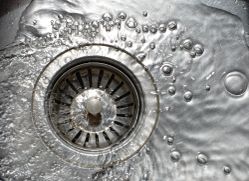
A septic system is an efficient way to dispose of wastewater in homes that aren’t close to a public sewer line. However, like most plumbing, it can be subject to clogs and other maintenance concerns. The following guide explores how to best take care of yours to keep water draining away smoothly.
How to Protect Your Septic System
1. Safeguard Your Drainfield
Your drainfield may look like a large, empty space in your yard, but below the ground, there’s a network of pipes that direct water so that it filters through the soil. Building on this space or parking heavy vehicles there can crush the lines, leading to costly septic repairs.
You also shouldn't plant anything more than grass or shallow-rooted flowers in the area; produce from a food garden over a drainfield may not be safe to eat, and large shrubs or trees can grow their roots into the pipes and clog them.
2. Be Careful What You Put Down the Drain
The more water that runs down your drain at once, the more it taxes the septic system. Choose water-saving appliances, showerheads, faucets, and toilets to cut down your water usage.
Never flush any paper or cotton products except toilet paper, even if they say they’re flushable, because these don’t disintegrate correctly and can cause clogs. Also, avoid flushing cat litter because it can absorb large amounts of water, growing in size and creating blockages.
 While it’s alright to put small amounts of food waste down a garbage disposal, avoid grease and fat since these can solidify in the pipes. Absorbent foods like rice and pasta can swell up and should also be tossed in the garbage instead. Finally, don’t put harsh chemicals like drain cleaner down the drain, as they can interfere with the balance of beneficial bacteria in your septic system.
While it’s alright to put small amounts of food waste down a garbage disposal, avoid grease and fat since these can solidify in the pipes. Absorbent foods like rice and pasta can swell up and should also be tossed in the garbage instead. Finally, don’t put harsh chemicals like drain cleaner down the drain, as they can interfere with the balance of beneficial bacteria in your septic system.
3. Inspect & Pump Regularly
Your septic system works by separating wastewater from the solids you flush. The water filters through the soil, while the solids stay in the tank. The tank needs to be emptied through septic pumping to prevent overflow and back up.
Depending on the size of your septic tank, the number of people in your home, and the amount of water you use, you need septic pumping every two to three years. Check with your septic provider to establish a timeline that works for your household.
To schedule inspection and pumping for your septic system, call John's Reliable Septic in Springfield, OH. For over 25 years, this locally owned and operated company has provided Clark County with reliable service, including 24/7 availability for emergencies. For a free estimate, call (937) 926-1482. Visit their website to learn more about their capabilities. Don’t forget to mention you found them online for $10 off septic tank pumping!
About the Business
Have a question? Ask the experts!
Send your question

